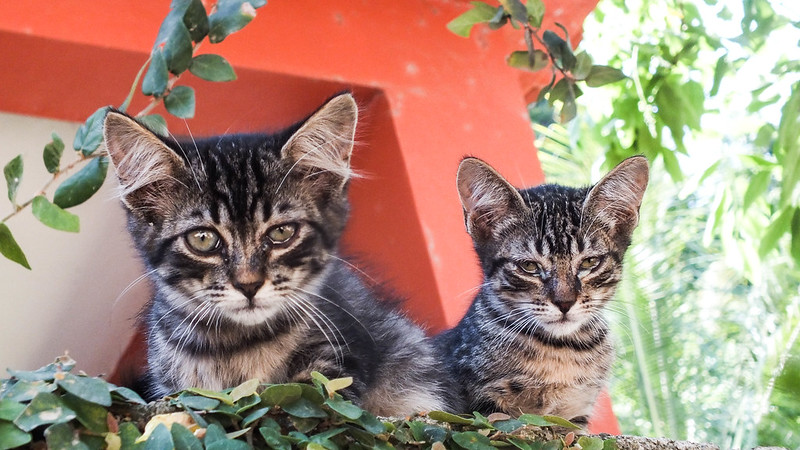
As more details have come out about the missile strike that crippled
the Russian warship Moskva, every one of them only seems to increase the
feeling—already well earned on the ground—that the Russian military is
simply incompetent at the most basic things. The idea that the Neptune
missiles launched at the Russian flagship were skimming the waves and
operating under the cover of a carefully planned operation that
misdirected the ship’s attention toward a distant drone is attractive.
It’s probably even correct. But it isn’t the whole story.
Neptune missiles have active targeting systems. That is,
unlike some of the systems directed to specific targets by observation
drones or just looking through cameras, the Neptune is tossing out its
own radar signal all the way in. In an electronic sense, this is a noisy system.
It’s exactly the kind of system that multiple layers of defensive
weapons should have seen coming. Even if every sailor on the ship was
sleeping off a vodka hangover, even if everyone on the bridge was
watching a Bayraktar flying far off to the west, automated guns should
still have flipped out from the Moskva’s deck and rained an unholy hail
of bullets at those incoming missiles, shredding them before they got a
chance to cause damage. That’s the whole purpose of such defensive
systems. This is exactly the kind of attack they should have stopped.
But didn’t.
This likely speaks most directly to the level of maintenance on the ship. Unless Ukraine got just massively lucky (which … that happens)
the defensive systems were at the best ineffective. More likely, they
were not operational. Hell, they may not even be present. Somewhere up
the line, there’s no doubt someone who pocketed a few dollars by not
doing routine checks and maintenance. There may be someone who sold the
whole system.
The situation with the Russian warship also speaks to Russia’s obvious inability to coordinate actions. As kos noted, “A
fleet exists for a reason. They work together. This one is listening
for submarines, that one is looking out for mines, and hey, let’s keep
an eye out in the sky.”
The ability of Ukraine to pull off this attack in the first place is
heavily dependent on Russia’s inability to generate any kind of unit
cohesion and cooperation, at sea or on land.
That kind of command and control failure opens up large armies to
being destroyed by smaller forces that are able to move quickly in a
coordinated manner to bring more force to bear on isolated portions of
the enemy.
When each battalion tactical group, and each warship, is fighting as
if they are on their own rather than part of a larger integrated system,
it doesn’t matter how many other Russian forces are available. The
whole Russian army might as well be one BTG or one Moskva for all the good it does for the people fighting.
I’ve brought up before the Battle of Prokhorovka, which was probably
the largest clash of armored vehicles in combat history. In that battle,
the Soviets lined up 600 tanks and essentially just told them all “Go!”
No complex instructions. No real goals other than to shoot any German
tanks that happened to be in front of them.
This brainless advance cost the Soviets 400 tanks. But still, it was a
victory. It accomplished the critical goal of slowing the German
advance if only because—and this is true—the Germans ran out of shells
and got simply exhausted by Soviet tanks. The Soviets held the field and
they kept on moving forward.
This is exactly the sort of strategy that can be achieved when a
large mass of untrained, inexperienced soldiers are treated as utter
muppets, there’s no good communication, and the general in charge has to
keep things down to kindergarten-level simplicity. In other words, it’s
the kind of tactic you might think Russia could use today, and might be
planning as it piles up thousands of armored vehicles in eastern
Ukraine.
Except there’s one officer who seems to be relentlessly effective on
the Ukrainian side: General Mud. Because of that general’s legions of
raindrops, which have been falling in the Kharkiv area most of the week
and are expected to resume on Saturday for another unbroken week of
deluge, Russia has had little choice but to restrict its movements to
paved highways.
That turns every little road into a chokepoint subject to being hit
from both sides. It makes it difficult for Russian observation drones to
spot Ukrainian traps. It makes small rivers, and even streams,
difficult to ford when bridges are down. Russian BTRs are supposed to be
notable for being “nimble” and “fast” when compared to other armored
vehicles. None of that matters when they are in the middle of a convoy
shuffling single-file down a rain-slick road at 5 mph. We keep seeing
burned out Russian vehicles along highways rather than out in fields,
not just because that’s where they’re easier to photograph—it’s where
the battles, such as they are, are being fought.
Rather than being able to line up their tanks and overwhelm Ukraine
with a second Prokhorovka, Russia is forced to fight a hundred
little Thermopylae, where every highway in Kharkiv and Donetsk oblasts
might as well be the “Hot Gates.”
Of course, Ukraine also has difficulty massing its forces under these
conditions, but chokepoints always favor the defense. So long as Gen.
Mud keeps up his assault, Russia can’t execute any Big Dumb Actions.
It’s forced to stick to Small Dumb Actions. Which keeps them from making
large advances, and allows Ukraine time to both dig in for defense and
bring more Western weapons to the front.







































:extract_focal()/https%3A%2F%2Fcdn.theatlantic.com%2Fthumbor%2FdNMfE50KCmdnBb1eRS-CUODd1dU%3D%2F0x0%3A2400x1350%2F960x540%2Fmedia%2Fimg%2Fmt%2F2022%2F03%2Fsave_putin%2Foriginal.jpg)
:extract_focal()/https%3A%2F%2Ftheintercept.imgix.net%2Fwp-uploads%2Fsites%2F1%2F2022%2F04%2FGustavo.jpg%3Fauto%3Dcompress%252Cformat%26q%3D90)






